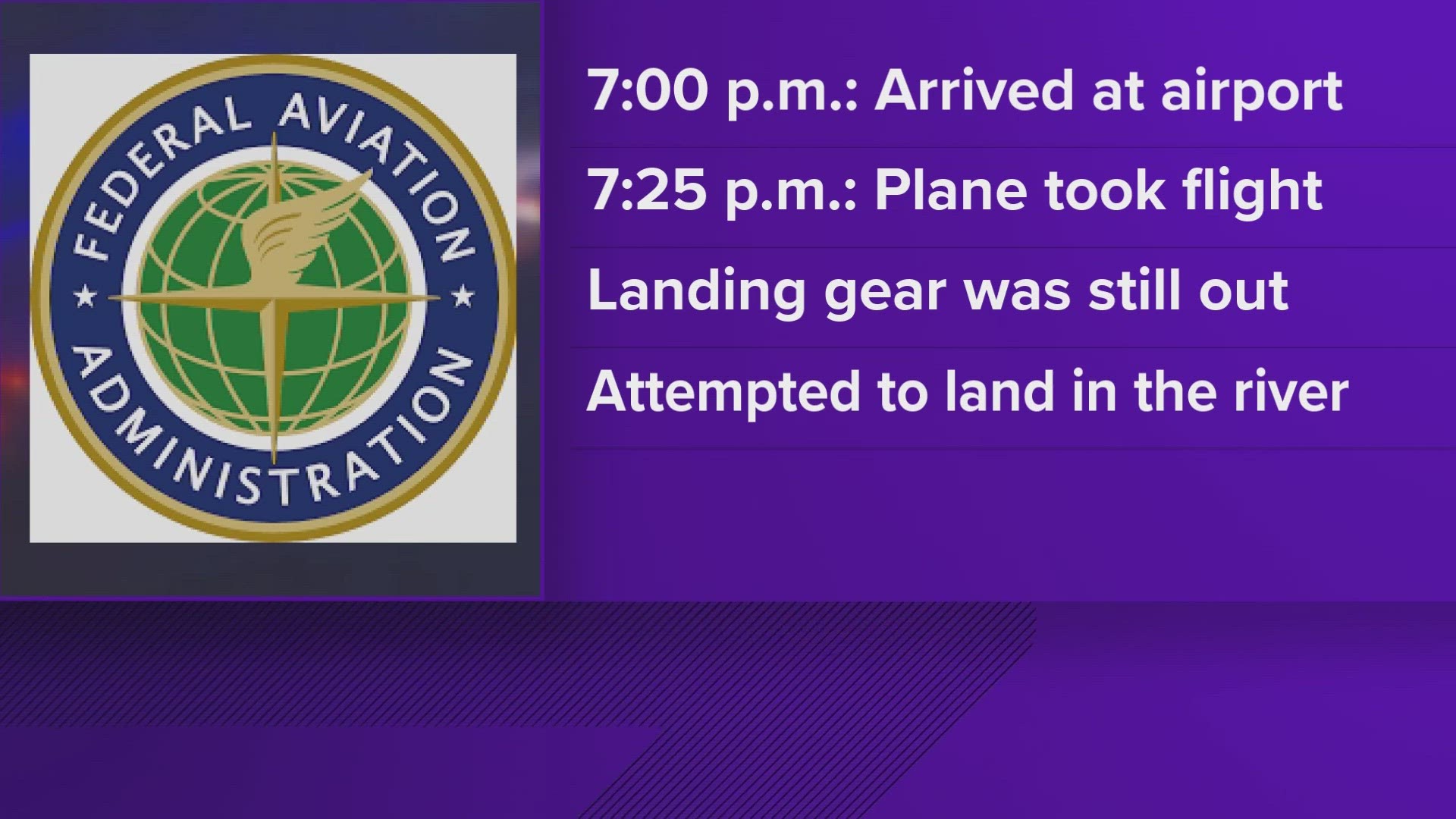KNOXVILLE, Tenn. — The pilot of a small plane that crashed into the Tennessee River, near Downtown Island Airport, gave a statement to the Federal Aviation Administration about the crash. It went down on March 25 and no injuries were reported in it.
It stayed submerged in the water for around a day after the crash, while the FAA completed its preliminary investigation.
Mike Williams said in a statement to the FAA that he decided to take a flight in a SeaRey plane that day when visibility was good. He also said he was not planning to stay out for long, practicing water and runway touch-and-go maneuvers for around 30 minutes.
He said he arrived at the airport around 7 p.m. and started preflight, making sure the plane had fuel and was safe to fly. In the statement, Williams said it had around 14 gallons of premium, unleaded fuel and its oil level was normal, and it also did not have contamination. He said he started the engine at around 7:20 p.m. and went to Runway 8, and did not notice any problems.
"Around 7:25pm, I departed 08, announcing on CTAF [a kind of frequency used by pilots] that I was staying in the pattern. With the relatively light winds, the aircraft climbed very well and I estimated I was more than 100 feet off the ground before passing the first taxiway intersection," he said in the statement. "At that moment, I would have normally put the landing gear up. But since I still had another 2000 feet of usable runway, I opted to leave it down for the moment in case I needed to abort and land quickly. I neglected putting it up as a passed the end of the runway."
He later said on the frequency that he would be performing a water landing west of the airport. However, he said he "did not process" that the gear indicator was set for a runway landing. He said the landing gear was down, but he did not notice.
"I think I was distracted or lost focus. I know I was watching water conditions/wake and rechecking my landing spot most of the time I was on base," he said in the statement. "Turning final, this was my other place to re-verify gear position. Again, I missed it. I know that I re-checked flaps and trim and was concentrating on airspeed and pitch attitude. At that point, I became hyper focused on my landing area and maintaining optimal airspeed for a water touchdown. 55mph, letting it bleed down to 50mph on touchdown."
The next thing he said he knew, he felt like he was punched in the face and water passed his neck. He said he quickly worked to escape the plane after it hit the water.
"It was dark, it was cold, and I did not get a good breath. I managed to find an air pocket at the roof of the baggage area and then wiggled out. I believe I kicked windscreen, which had caved in. It could have been the instrument panel. My left leg was briefly stuck under something. I found the left canopy and pushed it back. I knew which way was out now and pushed my way out," Williams said in the statement.
He said he only had a large bruise on his shoulder from the safety belt, as well as scrapes and cuts. He said a company was contracted on March 26 to pull the water out of the water and to the boat ramp at the Downtown Island Airport.
"I think I got complacent," he said. "I hate to admit it, but sometimes a routine check turns into just going through the motions. I am fairly certain I looked at the gear indicator at least once on base. Either I did not connect mentally that I was doing a water landing and that was the wrong setting, or a looked and did not see it. My other point of failure was not noticing the gear was down - right outside the window next to me. I should have looked at it and realized it was mispositioned for that kind of landing."
In the statement, he also said he considered himself lucky to survive the crash.

